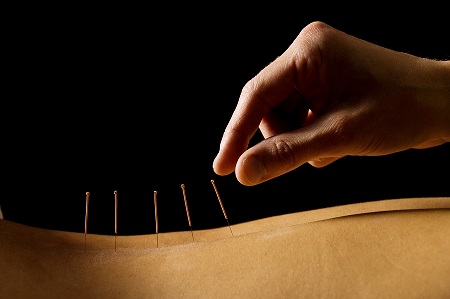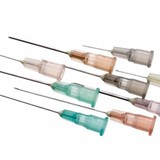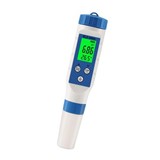The researchers looked at surface conditions and other physical properties of the two most commonly used stainless steel acupuncture needle brands.
The study which has been published in Acupuncture in Medicine found although manufacturing processes have improved, surface irregularities and bent needle tips have not been entirely eliminated.
Lead investigator Professor Mike Xie, director of the Centre for Innovative Structures and Materials at RMIT, said acupuncture was a safe treatment overall but the research showed it could be made even safer.
"In China, Chinese medicine including acupuncture, accounts for 40 per cent of all medical treatment, while in Western countries, acupuncture is one of the most frequently used complementary therapies," he said.
"Our findings show that acupuncture needle manufacturers should review and improve their quality control procedures for the fabrication of needles.
"In particular, needle tips should be properly formed, sharpened and cleansed.
"Extensive research on acupuncture has demonstrated its safety and benefit for a range of conditions.
"But more needs to be done to enhance the comfort and safety of patients undergoing acupuncture treatment worldwide."
Magnified acupuncture needle tips
A comparison of surface conditions before and after acupuncture manipulation (magnification 5000×).
China, Japan and Korea are the main suppliers of acupuncture needles, with China providing up to 90 per cent of the world's acupuncture needles.
In the study, scanning electron microscope images were taken of 10 randomly chosen needles from each brand, with further images taken after each needle underwent a standard manipulation – the equivalent of using them on human tissue – with an acupuncture needling practice gel.
The images revealed significant surface irregularities and inconsistencies at the needle tips, particularly in needles from one of the brands.
Metallic lumps and small, loosely attached pieces of material were observed on the surfaces of some needles. Some of these fragments disappeared after the acupuncture manipulation.
Co-author Professor Charlie Xue is director of the Traditional and Complementary Medicine Research Program in the Health Innovations Research Institute and Head of the School of Health Sciences at RMIT.
Professor Xue said the metallic residue could be deposited in human tissues, causing discomfort and potentially allergic reactions such as dermatitis.
"While acupuncture needle-induced dermatitis has been extremely rare, it is important to minimise the potential for such reaction through further improvement of the needles used in human practice," he said.
"Malformed needle tips can cause problems including bleeding, bruising, or strong pain during needling, which are more commonly reported following acupuncture treatment.
"An off-centre needle tip could result in the needle altering its direction during insertion and manipulation, consequently damaging adjacent tissues.
"While none of these potential problems would result in serious or long-term injury, patient experience and safety are paramount and the quality of acupuncture needles must be more rigorously improved."
The researchers suggested the small metallic pieces found on the needle surfaces were most likely from the grinding and polishing processes during the manufacture of the needles.
These processes would also generate electrostatic forces that would attract tiny metal filings to the needle surfaces.
The metallic pieces should have been removed from the needles if adequate cleansing processes had been carried out, the study found.
The research team included Dr Shanqing Xu (Swinburne University of Technology) and Dr Claire Shuiqing Zhang (RMIT Health Innovations Research Institute).












-160x160-state_article-rel-cat.png)


